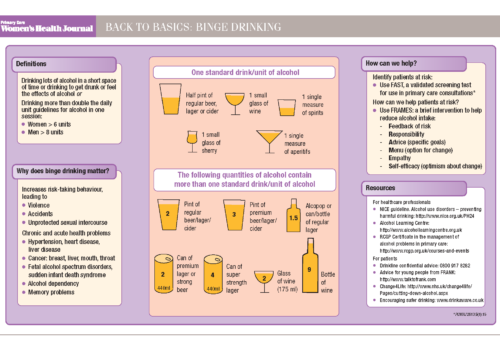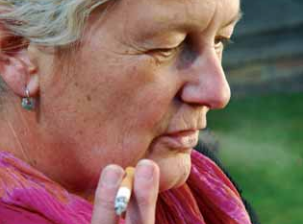The combined hormonal oral contraceptive pill (COC) has been available in the UK for the last 50 years. During this time, the dose of ethinyl estradiol has fallen from 100 mcg to 20-30 mcg, increasing patient acceptability and improving drug safety by reducing the risk of venous thromboembolism (VTE). At the same time, a number of non-contraceptive health benefits have emerged in association with combined hormonal contraception (CHC).
Fracture liaison services: reducing fractures and improving care
Fracture liaison services (FLS) systematically target high-risk patients, offering assessment and intervention to reduce fractures. Despite official guidance, less than two thirds of local health services have established an FLS. The Crawley FLS is an example of a community-based, integrated service that has helped to reduce local hip fracture rates and save NHS costs for the local health service.
Gynaecology referrals: on the right track
Gynaecology rapid-access clinics allow prompt assessment by specialists of women with suspected gynaecological malignancy, with the aim of improving cancer outcomes and patient experience, and ultimately reducing mortality. However, the ability of trusts to assess and treat women within specified targets relies on appropriate referral from primary care. Without this, fast-track services become overwhelmed with women who could be assessed by a routine referral, potentially delaying the review of women with suspected malignancy and creating unnecessary patient anxiety.
Early pregnancy loss: can we improve our practice?
The majority of pregnancies progress successfully, but some result in a miscarriage or in an ectopic pregnancy. About two-thirds of the related maternal deaths are associated with substandard care due to late or missed diagnosis. Recent NICE guidelines aim to improve outcomes for women, and this article provides practical information on how the new recommendations impact on day-to-day practice in primary care.
Why prescribe combined hormonal contraception
Renewed publicity about the risk of venous thromboembolism (VTE) with combined hormonal contraception (CHC) may encourage busy GPs to prescribe progesterone-only pills to women declining long-acting reversible contraception (LARC). This article aims to put the bad press into context, outline the lifestyle and long-term health benefits of the combined methods, and offer advice about which CHC might suit which client.
Contraception and sexual health for young people
Young people under the age of 18 present particular challenges for many health professionals, and a structured approach is essential when providing services for this age group. Health professionals have a responsibility to provide information in an approachable manner on all methods of contraception, including long-acting reversible contraception (LARC), and the prevention and testing of sexually transmitted infections (STIs). Professionals also need to be able to accurately assess a young person and undertake safeguarding as needed.
Evaluation of the Maternal Lighten Up Weight Management Service
Most overweight/obese pregnant women gain more weight than they should during pregnancy, which can lead to adverse maternal and neonatal outcomes. This study evaluated the Maternal Lighten Up service, in which obese pregnant women are referred by their midwives to a choice of several weight-management programmes. Weight is measured at the start and self-reported at the end of pregnancy. Of women referred, only 36% started a programme. The Health Trainers programme was most popular and most frequently attended, followed by Slimming World. Participants attending Slimming World and dietetic programmes were less likely to exceed Institute of Medicine guidance on weight gain during pregnancy, but these data are based on low follow-up rates of weight at the end of pregnancy. This study provides insight into the preferences and behaviour of obese pregnant women referred to different weight management programmes, and the findings may contribute towards shaping future maternal obesity weight management services.
Back to Basics: Binge drinking
Lung cancer: A rising risk for women
In the UK, more women die from lung cancer than any other cancer, including breast cancer. Smoking is by far the commonest cause, and lung cancer rates are continuing to rise in women who started to smoke in the 1960s. It is never too late for anyone to give up smoking, even after a diagnosis with lung cancer, when early intervention may result in cure or significantly prolong life.
Subfertility: time is of the essence
More couples are now starting their families later in life, a social trend that coincides with a rise in the number of people requesting referral for treatment of subfertility. In response, the National Institute for Health and Care Excellence (NICE) has updated its fertility guidelines to enable more patients to receive timely, appropriate and successful treatment.
Supporting women with genital herpes
Genital herpes is a common sexually transmitted infection, especially among young adults. It may be associated with complications, notably in pregnant women, but it is not usually life-threatening. However, the diagnosis continues to attract stigma, and patients need reassurance and support as well as effective treatment.
Connecting for Women’s Healthcare
One of the great by-products emerging from the Primary Care Women’s Health Forum (PCWHF) is connectivity. Our members are becoming more aware of local initiatives in other parts of the country, and are connecting with and learning from other clinicians to share best practice in women’s healthcare.

























